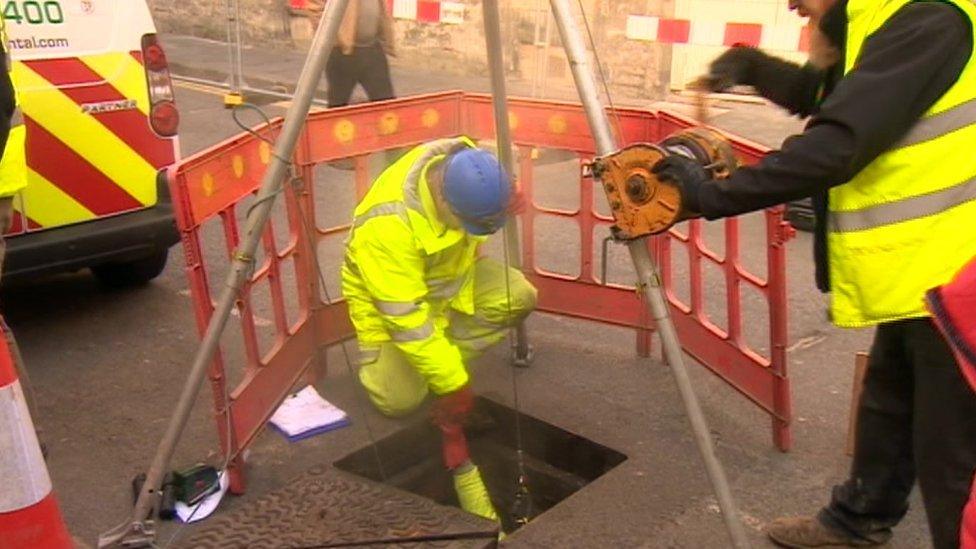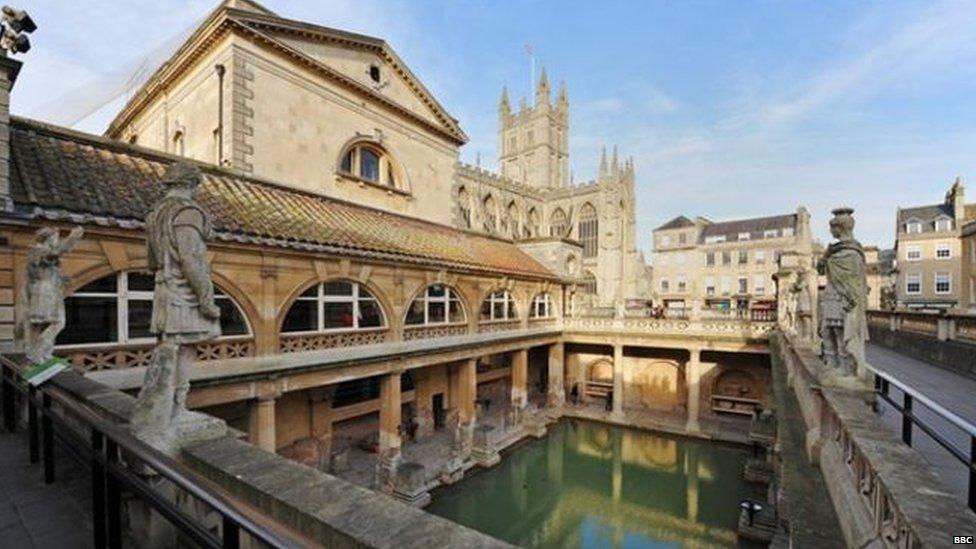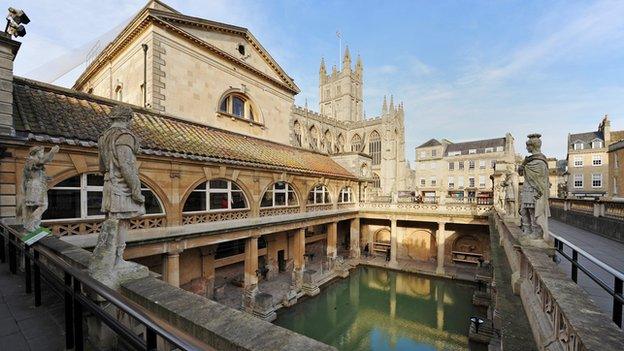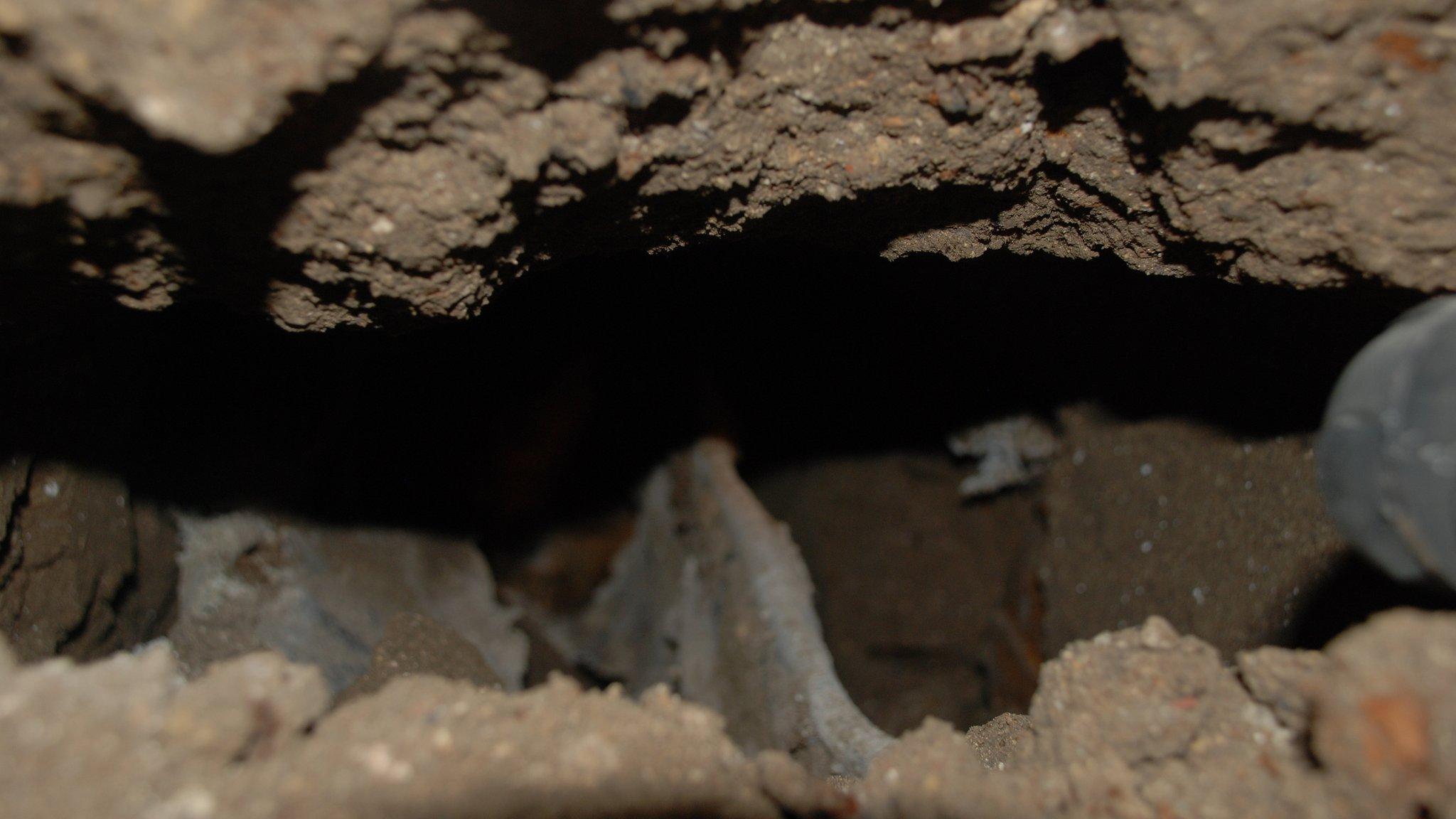Work begins on hot spring heating system at Bath Abbey
- Published

Engineers were lowered into the Roman storm drain to see if a prototype heat transfer device will work
Work has begun to install devices to heat Bath Abbey by drawing warmth from the city's underground hot springs.
Warm water leaving the Roman baths at 36C (96.8f) will flow past the radiators, which will in turn power a heat pump and underfloor heating.
The heat transfer radiators are being put in the 2,000-year-old Roman drain, which flows into the River Avon.
The radiators have been specially designed to resist corrosion from the water, which contains some 42 minerals.
"One million gallons of hot water flow through this drain every day into the Avon, we will be generating 200 kilowatts of energy from this," said Edward Levien from Isoenergy.
The warm water could provide up to seven times this amount of energy for the city, but Mr Levien said the practicalities of installing equipment in the narrow drain made this difficult.
"It has been a fascinating project, getting to know more about the history beneath our feet," he added.

Bath's hot waters have attracted visitors to the city for over 2,000 years
The installation of the radiators forms part of Bath Abbey's Footprint Project, external, which among other things, will help to stabilise the historic building.
Before work began, the abbey floor was said to be at risk of collapse, because thousands of burials underneath had created voids over time.
Excavations have also revealed a complete Medieval tiled floor, two metres down.
- Published17 April 2018

- Published24 March 2015

- Published15 August 2013
